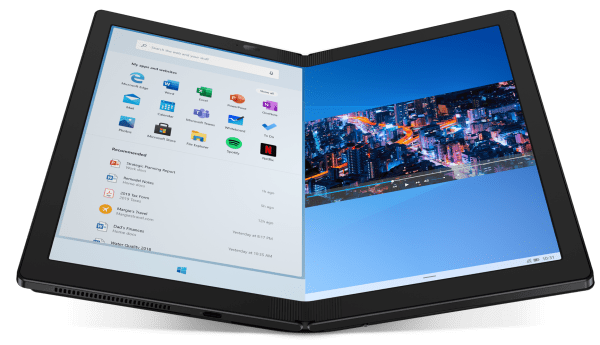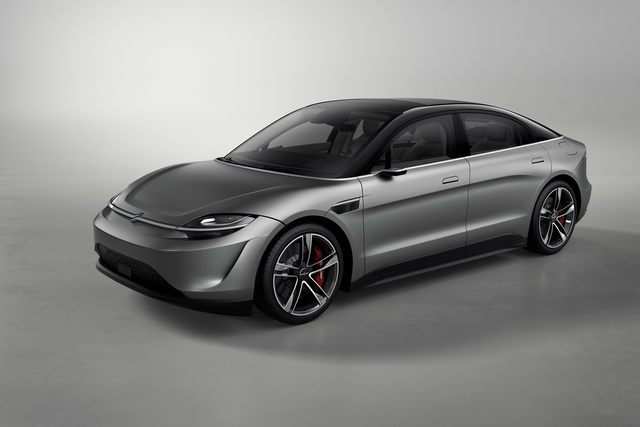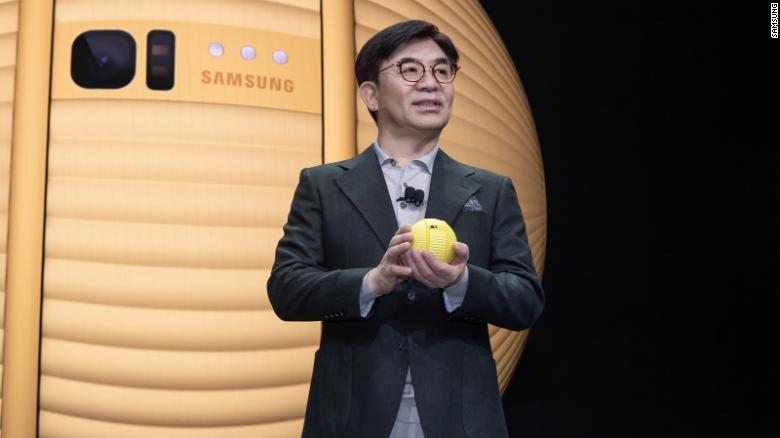
CES 2020 is now over and with it, so is this year’s quackery. We saw litter boxes that film your cat as it does its business, and we saw the world’s first transformer toy which transforms and strikes poses on your command, and a whole lot of other things that we still need time to process. But more than anything else, CES 2020 has left us with a lot of confusion and annoyance. As it is traditional in the case of CES, we saw some sleek shiny stuff, some bizarre gadgets and gizmos, and things that will never be available in the market. Yes, this year, it appeared that CES was all about concept over reality. Companies wanted to flaunt the work of their R&D devisions more than their shelf ready products and naturally that bummed all of us out- What is the sense in going to a CES, an event which has lately become a place for world’s biggest tech giants to come and showcase all the stupid things they have been working on all year, if we can’t even buy them!? So given how disappointing this year’s CES was, trying to find the best among the plethora of idiotic things that we saw was a next to impossible task, mostly because things that impressed us will never be out in the market. So we changed our train of thought and decided that this year, instead of putting together a list of the top ten gadgets and new technologies that we saw at CES, we will make a list of top ten gadgets and technologies that managed to interest us. So here it goes. But before you read any further, let us tell you that this list is in no particular order.
1. Lenovo Thinkpad X1 Fold
2. Alienware Concept UFO
3. Samsung Odyssey G9
4. Intel NUC 9 Extreme
5. Sony Vision-S
6. Neon
7. Quibi
8. Ballie
9. Netgear Nighthawk Mesh
10. Asus Rog Zephyrus G14
1. Lenovo Thinkpad X1 Fold

The foldable screen trend has been trying to take off for the past couple of years and in 2019, some over-hyped releases made it look like this technology, however useless it may sound, was finally ready for us, but sadly that didn’t turn out to be the case. So it was only natural that we didn’t see many ready to ship foldable devices at this year’s CES. Nobody yet believes that consumers will be much interested in this technology, at least not in the state that it is in right now. But, Lenovo thinks differently. This year, Lenovo launched Thinkpad X1 Fold which will be in the market some time in the summer of 2020 with a price tag of $2,499! Lenovo claims that it has been working with LG Display for the X1 Fold for four years and chances are that they may have perfected it and if not that, then at least mature it enough for us to use. While in our demo of the device, nothing felt particularly wrong with X1 Fold, nothing felt particularly right with it either. The device is not as sleek as we’d want it to be and the screen, it’s not that impressive. Also, it runs on Windows 10X, Microsoft’s Dual Screen OS, which doesn’t really feel very well grounded yet. But for all its faults, Lenovo Thinkpad X1 Fold made the list because it is an actual product. It is not just yet another concept laptop. It has a release date and a price, which is slightly steeper than it has any right to be but still a fixed price tag nonetheless. All of this makes Lenovo Thinkpad X1 a worthy addition to this list.
2. Alienware Concept UFO

Ever since Nintendo Switch took the gaming industry by storm, the rules have changed. We now know that console-portable hybrid game machines is exactly what hardcore gamers want- a console quality gaming device that they can take with them wherever they go. And sensing the need for another such device in the market at CES 2020, Alienware introduced a prototype of Concept UFO, its console-portable hybrid gaming device which is basically a Windows 10 PC stuffed into a handheld device. The makers were not so subtle about the inspiration behind this device, since they downright copied a lot of what Nintendo did with Switch, starting from the console to monitor connectivity to Joy-Con like controllers, and an included display. But the problem is, we have no idea what it is really capable of. Alienware didn’t tell us much about its hardware or its specification, we have no idea when it is coming out or if it is at all and how big of a hole we will have to dig in our wealth to get one of these puppies.
3. Samsung Odyssey G9

Pretty much everyone on the show floor could agree to one thing, that Samsung Odyssey G9 is as good as a monitor gets. We were all left mesmerized by its sheer size, the curve which matches human eyes and the crispness of image. And it is something out of a gamer’s wet dream because G9 envelopes you, and thus elevates your gaming experience. With 240 Hz Refresh Rate and 5120 x 1440 resolution it is definitely the best monitor money can buy.
4. Intel NUC 9 Extreme

At the rate with which the technology industry is moving, it seems like every year we need to upgrade the specs of our PCs. Whether it is for gaming purposes or some high-end video editing software, we are constantly required to upgrade which is not a fun thing to do. Typically you can up the specs of your PC by putting in more graphics cards, RAMs or a memory sticks or change the motherboard all together along with a bunch of other crucial inner organs of your PC. And if none of these methods do the trick, then alas, you buy a new PC which is again, never an easy task. Luckily though, Intel NUC 9 Extreme is now giving us a new way to upgrade our PCs, a more modular way. Intel NUC 9 Extreme is an extremely compact PC which has all the crucial parts of a PC packed into a small cartridge called NUC Element. Thanks to this companies can now start building more compact gaming PCs without compromising on the quality and power.
5. Sony Vision-S

In a show which was mostly about concepts, Sony was one company that did it right. This year at CES, Sony released its concept electric sedan called Vision-S. And the best part about it was that it was not just a couple of metal sheets welded together and then covered with a bunch of neon lights and stupid graffiti. No, Sony came to win with their half concept half prototype car that put every other concept vehicle displayed at CES to shame this year. Vision-S was impressive. Laden with image and other sensors from top to bottom and a dashboard with multiple screens fitted to cover the space from one end to the other and that lets to you control aspects of the car, from temperature to music, and not to forget, an impressive engine and media center, Sony Vision-S is a car made for the future. But sadly, Sony says that Vision-S will never be anything more than a concept.
6. Neon
:format(webp):no_upscale()/cdn.vox-cdn.com/uploads/chorus_asset/file/19585581/DSC00648.jpg)
If you have been keeping up with CES2020, then you have probably heard Neon, overhyped and disappointment being said in a single sentence, more than once. And there is good reasoning behind it. Before CES 2020, nothing much was known about Neon other than what its twitter page said- Artificial Human (whatever that means). And when the press conference was done and STAR Labs (A startup funded by Samsung)CEO had drawn the curtains back on the project which will, in his words, be his legacy, we can very firmly say that we still don’t know much about Neon. Now the highly condensed version of it is that Neons are computer generated Avatars with speech and facial expression capabilities. And that’s that. How much will these Neons cost? When can we buy them? And what will we use them for- as a personal assistant, digital companion, or what? All of these questions remain unanswered, because STAR Labs itself doesn’t have an answer to them yet. The technology is nowhere near ready for users and so the company has no marketing plan for it. At best, Neon feels more like Google Glasses which is likely to end up in a pile of failed do-dos from an overly ambitious maker. But, while we may not be able to understand the why, the what, and the when of Neon, we cannot deny that it took real genius to put even this much together. And while if Mistry and his team will be able to ever create a market ready Neon based, or Neon itself as a, product is still a big question, we have to give them props for being ambitious.
7. Quibi
Streaming wars wage on. HBO Max, Disney +, and god know how many more streaming services have made their debuts in the last year and a half, all of them fighting for the most valuable resource to them- human attention. And to add to this overly confusing and crowded industry, comes Quibi with an outlandish technology that might be a kind of a big swing and too much of a long shot to be placing all your bets on. And yet, the makers are sure that there is a market for what Quibi has to offer and they are going to juice this opportunity properly. What Quibi offers is Turnover- the technology to turn your mobile device from landscape to portrait mode while watching a video and not deal with a loss in video quality. The trick is that every shot is shot twice, once in landscape and once in portrait mode and then streamed together on a user’s device. So when he changes the mode, the respective video can be streamed. Do we need such technology? Maybe? Are we willing to pay for it? If it has some good content, then why not? And that is also where Quibi is working hard. It has already hired a bunch of A-list writers, directors and actors to create contents for its streaming service.
8. Ballie

Ballie is, as its name suggests, a ball shaped robot companion that rolls around after you, correcting your yoga poses and cleaning up your dog’s filth. But how much of all this can Ballie actually do? We don’t know. In a video we saw, Samsung sees Ballie as a butler who makes your life a little more organized and simple. But in reality, all Ballie did was roll back and forth and “Bleep Blop” which was kind of cute. Samsung has not revealed a release date or a price tag for Ballie yet.
9. Netgear Nighthawk Mesh
:format(webp):no_upscale()/cdn.vox-cdn.com/uploads/chorus_asset/file/19575406/RAX50_Hero_Transparent.png)
While WiFi 6 is out and about inside millions of iPhones already, nobody is making much use of it, simply because there is a lack of affordable WiFi 6 router meshes. Netgear has a solution for that. At this year’s CES, Netgear released Nighthawk Mesh which brings the price for WiFi 6 Mesh to a more affordable marker- $230. It allows 1500 Square Feet coverage per node and supports about 1.8 GB of throughput.
10. Asus Rog Zephyrus G14

It was one of the most talked about laptops at this year’s CES, not because of its amazing gaming capabilities, but because of its dual nature. Let us explain. What G14 has going for it is how normal it looks, as opposed to some of the freaky looking gaming laptop designs we see so often. G14 promises to be a gaming laptop and a laptop you can take out in public and not be ridiculed or to your office and not get fired for techno-occult cyberpunk practices. It is a heavy-duty gaming machine that claims to have over 10 hours of battery life and RTX 2060 GPU that promises sublime gaming experience.
What? Not impressed? Then let us tell you that the lid of G14 is fitted with a dot-matrix display that you can customize to show time, a video, a GIF and much more.


